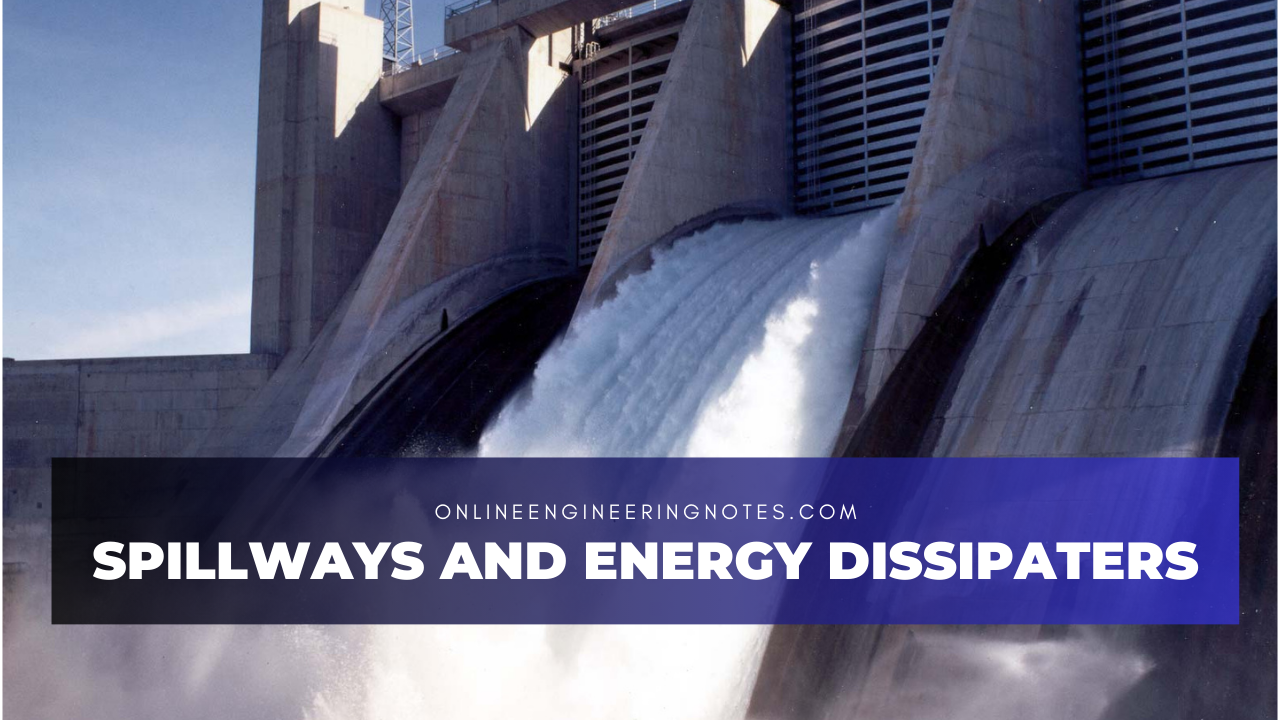1.1 Spillway
- Spillway is a structure used to control and manage the flow of water in hydropower plant.
Function of spillway:
- Helps to maintain water level of the reservoir at a constant level.
- Helps to regulate the flow of water.
- Prevent from flooding by allowing controlled released of water.
- Protect hydropower from overtopping.
- Helps to reduce erosion downstream.
Types of spillway:
A. Based on control mechanism
a. Controlled spillway:
- It has mechanical structure or gate to regulate the rate of flow.
b. Uncontrolled spillway:
- Does not have gate.
B. Based on purpose
a. Main spillway:
- Designed for safe passage of designed maximum flood.
b. Auxiliary spillway:
- Used in extreme cases to prevent a catastrophic breach to the dam.
c. Emergency spillway:
- Used in emergency situation when incoming discharge exceeds maximum design flood.
C. Based on prominent feature
a. Free fall spillway:
- It is one which flow drops freely from the crest.
- Not suitable for high drops.
b. Ogee spillway:
- Ogee spillway is a modified type of vertical drop spillway which has a control weir that is ogee shaped in profile.
- It is curved structure that is designed to provide a more efficient flow of water over a dam than traditional spillway.
- Used in high solid gravity dam.
c. Side channel spillway:
- Control weir is placed alongside approximately parallel to spillway discharge channel.
d. Chute spillway:
- Transfer excess water from behind the dam.
e. Siphon spillway:
- Difference in height between intake and outlet create pressure difference to remove water.
Cavitation:
- Formation of bubbles in fluid due to decrease in pressure.
- Occurs when the flow of water through the turbine is too fast, creating vacuum.
- Reduce efficiency of turbine.
Prevention measure:
- Install anti-cavitation device such as aerator.
- Reduce water velocity by increasing the size of spillway.
1.2 Method of energy dissipation
Energy dissipation:
- Minimizing the flow velocity to acceptable limit.
Type of energy dissipation:
1.Ski-jump:
- Suitable when foundation rock is good quality to withstand erosion.
- When tail water is low depth ski-jump formation takes place.
2. Flip bucket (Roller Bucket):
- Used to dissipate energy in situation where tail water depth is insufficient for the formation of hydraulic jump.
3. Stilling basin:
- Used to dissipate the energy of discharge passing the overflow section before the discharge is returned to the downstream river channel.
Types:
a. Horizontal apron stilling basin
b. Sloping apron stilling basin
References:
- Dandekar, M. M., & Sharma, K. N. (2010). Water Power Engineering. Vikas Publishing House.
- Punmia, B. C., Pande, B. B. L., Jain, A. K., & Jain, A. K. (2016). Irrigation and Water Power Engineering. Laxmi Publications.
- Singh, Bharat (2018). Fundamentals of Hydrology and Hydropower Engineering. Nem Chand & Bros.
- Central Water Commission, Government of India (2019). Handbook on Hydroelectric Engineering.
- International Energy Agency (IEA) (2021). Hydropower Status Report. Retrieved from www.iea.org
- Nepal Electricity Authority (NEA) (2022). Annual Report on Hydropower Projects in Nepal. Retrieved from www.nea.org.np
- United States Bureau of Reclamation (2020). Design of Small Dams. U.S. Government Printing Office.

